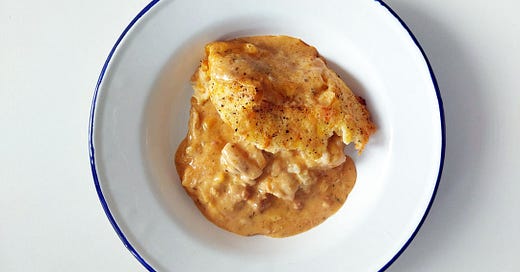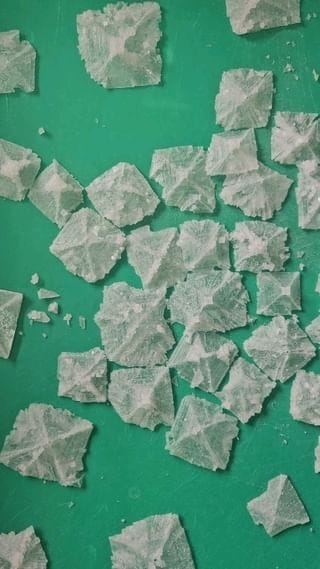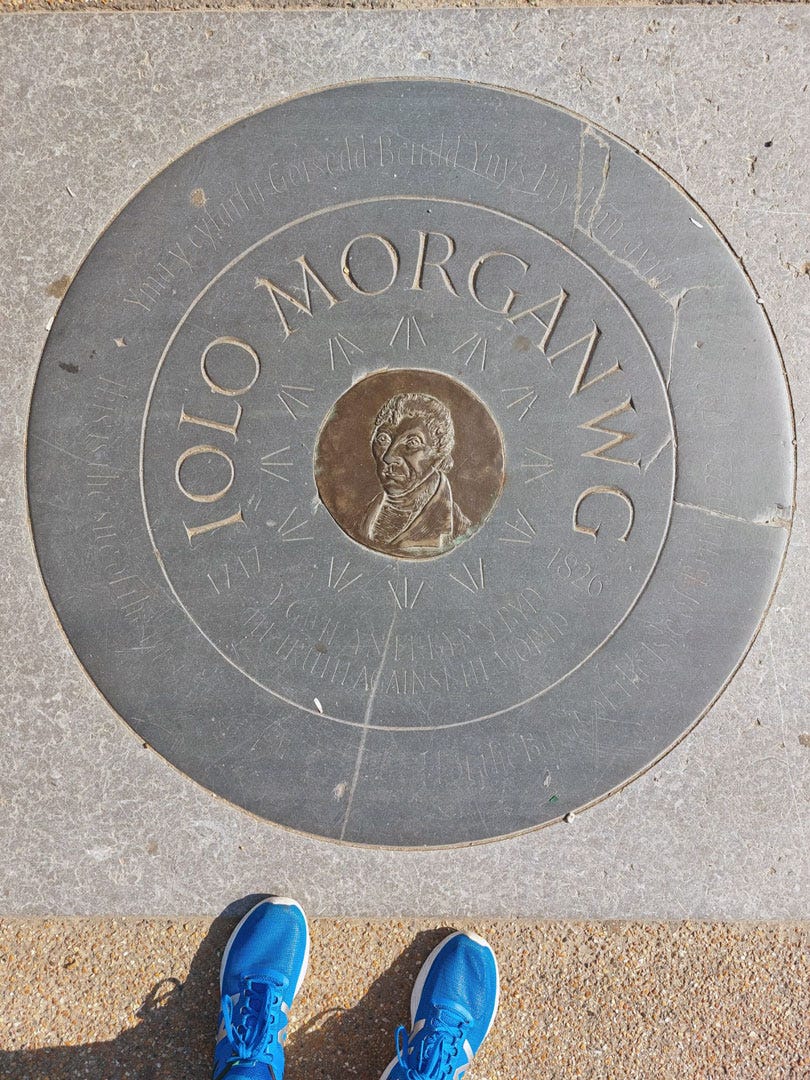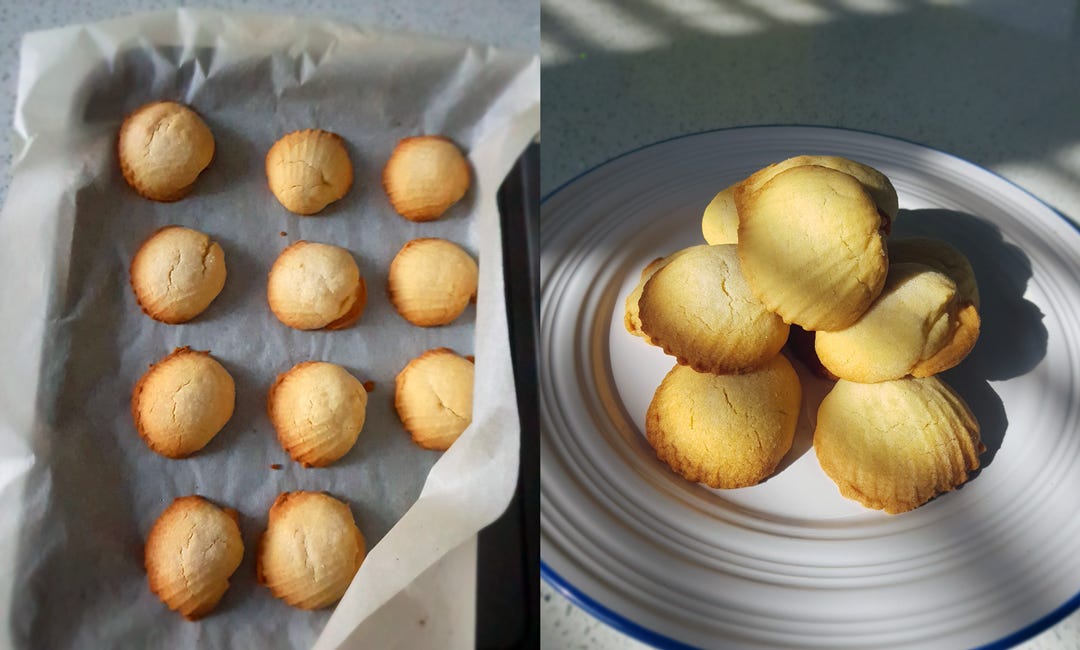Have you ever made something that just doesn't taste quite right? Perhaps you've followed the recipe to the letter, or you've thrown together some leftovers, and while what you've made is perfectly fine, it's just that… fine. There’s something missing, but you can't quite put your finger on what that is. It tastes good, but not great.
Often the answer is one of two things: salt or time. Let's take them one by one.
Salt is a magic ingredient. It can make dishes sing, add much needed savouriness to something sweet, or make your tongue tingle. Last weekend, I hosted the Wine & Spirits Theatre at the National Geographic Traveller Food Festival again. I explained to the thirsty visitors about tannins in wine and tea. In the UK we drink a lot of tea, which is tannic. You can feel tannins on your gums, they cause that drying sensation and make us notice more bitterness. You'll know the taste of tannins if you've ever left a teabag in for too long. To overcome tannic bitterness, we add milk and sometimes sugar to tea. I'm not suggesting you do the same with wine or your food, but here's where our magic ingredient comes in again. Salt also reduces the tannic feeling. It's why we tend to eat naturally salty foods with red wine – everything from salted nuts to charcuterie, steak to slow-cooked lamb. A classic chefy trick is to add salt to lift the flavours. It's also why you should pay attention when a recipe says to season a dish well.
The other missing part can often be time. We all know that marinated foods taste better when left longer, curry, chilli con carne or stew tastes better the day after. But it's also true of everything from how long you've boiled pasta, to giving a cake a few more minutes in the oven. Food writer Jenny Linford perhaps describes it best in her book The Missing Ingredient:
"To cook food well, one needs to know how to use time appropriately. Time in the kitchen can be a brisk affair measured in minutes: the quick cooking of spaghetti in boiling water until just al dente, the exciting, rapid transformation that happens when one plunges sliced potatoes into hot oil to make chips, the thickening as you stir a mixture of flour, butter and milk into a sauce. It can also be altogether more mellow: gently simmering bones and vegetables for hours to make stock, marinating a shoulder of lamb with spices overnight, the steeping of Seville orange peel to make marmalade, slowly roasting a piece of belly pork at a low temperature for hours until the meat is succulent and the crackling crisp and golden-brown.”
In old Welsh recipes, the answer to the missing ingredient seems to be neither salt nor time, rather, add bacon fat or dried fruit. Laverbread...cooked in bacon fat. Pancakes... with currants. But of course, bacon fat tastes salty, and currants are naturally sweet due to the time they've spent ripening.
What makes food taste great is also something that I've had to consider over the last couple of months, as I have had the great joy of being a judge for the Guild of Fine Food Great Taste awards. You'll know Great Taste, as you've no doubt spotted the little black and gold stickers on products in the supermarket with either one, two or three stars, which denote if a product has made it through the rigorous blind-testing process, and had consensus from the judges that it tastes, well... great. To get three stars, a product needs to be judged by around 20-25 judges who come from the world of food. They might be chefs and restaurateurs, producers, food writers, critics, honey sommeliers, chocolatiers etc.
This year I tasted some outstanding products, including silky anchovies and butter, a smooth golden rum, a zingy passionfruit sorbet, and a luxurious rum and raisin ice cream with heavily soaked raisins (my Nannie Gwen would have approved).
The results of the latest Great Taste products were released yesterday. So, look out for new Great Taste-awarded products in shops soon. Last year’s Wales winner of the prestigious Golden Fork award (the product of the year) was the glorious Traditional Mead from the boys at Hive Mind in the Wye Valley. This is no small feat, considering the judges try, taste and score more than 15,000 products from around the world each year. In celebration, Hive Mind created a brand-new mead using all the leftover honey from the judging process. The result? Friends in Mead made using honey from a blend of over 250 honey varieties from across the world.
The Eisteddfod Genedlaethol Cymru, the National Eisteddfod of Wales starts this week. It's the turn for south Wales to play host, with the celebrations taking place in Pontypridd. In celebration, I climbed up to the top of Primrose Hill in London on Monday. The viewing point affords the best view of London's skyline, but if you glance down at your feet, you'll see this circular plaque dedicated to Iolo Morganwg. This is the bardic name of Welsh history scholar Edward Williams. It is here on roughly this spot that he created the modern Gorsedd of Bards – a congregation of storytellers tasked with preserving and celebrating the stories, poems and culture of Wales and the Welsh language. He based it on a supposedly ancient tradition, even if his evidence is patchy verging on fantastical. It was then called Gorsedd Beirdau Ysys Prydain (Gorsedd of Bards of the Island of Britain) but is now called Gorsedd Cymru. We see it live in action at the National Eisteddfod each year, where the chief druid asks the congregation, “Ar oes heddwch?” (“Is there peace?”), to which the response is “Heddwch!” (there is peace). The Eisteddfod and Gorsedd were officially linked in 1819, but we can trace the Gorsedd to this lofty London spot on 22 June 1792 and to Iolo Morganwg.
The Recipe
Leftover roast chicken and chorizo pie with stwnsh topping
I tested this recipe the other week when the weather was not looking great, so you might want to save this one for when the sun goes back in – that said, I had my oven on most of yesterday bringing the temperature of my kitchen up to tropical. Anyway, as you’ll know, I love a leftover and this one uses stuff you’ll likely have lying around especially after a chicken Sunday roast. The topping is stwnsh. I have to thank my dear friend and fellow chorister Janet for telling me that this mix of mashed potato and swede has a name in Wales. It’s known as stwnsh rwdan or ponsh/ponch maip and often has carrots added to help with the colour. My friend Janet suggests, “Serve with gammon/bacon/sausage, fried egg and pickled onions, with a bit of bacon fat drizzled over! My kids used to make the mash into a volcano into which they wanted me to put the fried egg!” Sounds good to me!
Ingredients
3 large potatoes, peeled and roughly chopped
2 medium carrots, peeled and roughly chopped
1 small swede, peeled and roughly chopped
White pepper
Cream/milk
Butter
3 shallots, finely chopped
100g chorizo, finely chopped (Try Moch Coch Welsh chorizo)
200g leftover roast chicken, shredded
1tsp oregano
1tsp parsley
2tbsp plain flour
100ml dry sherry, vermouth or white wine
200ml chicken stock
200ml milk
50g Welsh cheddar cheese (such as Dragon)
Method
In a large pan of salted water, boil the carrots, potatoes and swede until soft.
Drain well and leave to dry out a bit, then mash with some butter and a drop of milk or cream and a generous helping of white pepper.
Meanwhile, in a large pan, gently fry the shallots and chorizo in some olive oil, until the shallots are soft and the chorizo slightly crisp and oozing its gorgeous red oil.
Add the chicken, herbs and flour and mix everything together. Turn up the heat and add the sherry and stir well.
Add the stock and milk and make sure everything is well mixed so that you have a sauce. Turn the heat down and simmer for a few minutes until the sauce thickens.
Tip the chicken and chorizo mixture into a large ovenproof dish, then gently top with spoonfuls of the stwnsh until covered. Scatter the cheese on top and bake in a preheated oven (Gas Mark 6/200°C/390°F) for about 15 minutes until the cheese is melted and bubbling.
The Playlist
To me, cooking and music go hand in hand, whether that’s singing at the top of your voice using a wooden spoon as a microphone while waiting for pasta to boil, or dancing around with the oven gloves on as the oven timer counts down. Here are this week’s ideas for your Welsh Kitchen playlist.
In honour of the Eisteddfod, the music this week is a recording of Côr Y Boro | Borough Welsh Choir performing at the 2019 choir competition. Secondly, a piece from Sir Tom Jones, as the Eisteddfod is taking place in his hometown. Here’s also a clip that I love of the audience singing while patiently waiting for the results of the choir competition at the Eisteddfod in Cardiff in 2018.
Also, in case you’re interested in Welsh singing, here’s a piece I wrote quite a few years ago for the BBC: Can all Welsh people sing?
Dadl Dau by Côr Y Boro | Borough Welsh Choir
Come Home Rhondda Boy by Tom Jones
Ross recommends
Still Wild
I was delighted to see that Still Wild from Pembrokeshire has been granted two stars for their new vodka. I’m a big fan of their vermouth – it’s great for drinking and for cooking – but this new spirit for them is made using local Pembrokeshire oyster shells to give notes of the ocean into the vodka. I can’t wait to get me hands on some to try it.
Also, if you fancy a job with Still Wild, now’s your chance as they are looking for help.









